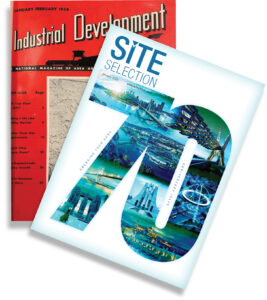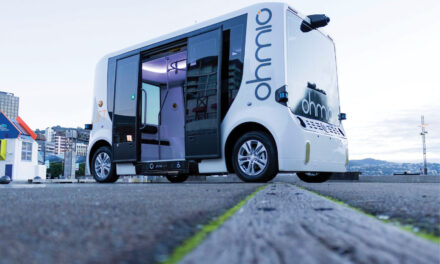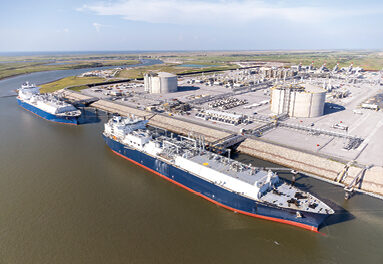
Before we look back, let’s look forward:
“The future of magazines and periodicals is in publications like Site Selection,” says Ashton G. Ellett, Ph.D., a historian and archivist at the University of Georgia’s Richard B. Russell Library, publications that are “hyper-focused to specific clientele in particular trades and industries and are able to give deep reporting with long reads and investigative deep dives into industries, states and locales. That’s something only outlets like yours can provide.”
It sounds like something our late founder H. McKinley “Mac” Conway, born and raised in Hackleburg, Alabama, might have said when he decided to publish an industrial development magazine called, of all things, Industrial Development.
In that first issue in 1954, Mac pledged the new publication would be “scholarly, but not stuffy,” that it would be a “professional journal serving the science of area analysis and site selection” via geographic spotlights, industry reports and lots and lots of data. “We hope to include in each issue some data which our readers can file for future reference,” Mac wrote, “so that the value of our work will be cumulative.”
Lo and behold, 70 years of work have accumulated. So we turned to someone else in our age bracket. Dennis Cuneo, partner at Fisher & Phillips LLP, is the former senior vice president of Toyota Motor North America, where he played a key role in the launch of Toyota’s manufacturing operations in North America. I spoke to him in December precisely 20 years after my first interview with him for this magazine.
“It’s a lot more analytical nowadays,” he says of the site selection process and profession, “although it’s still a gut feel business for a lot of big projects … more than you’d think. Take workforce, for example. I can get wage and skill levels, but not the work ethic. What’s the problem-solving ability of the workforce in that area and can they work as a team? It’s harder to find data on that. It’s a very subjective process.”
But journalism and storytelling can at least shed light on each time that process and its unique circumstances unfold.
“As the Bible is to preachers, your magazine is to site selectors,” Cuneo told me.
The Importance of an Archive
Ellett and colleagues at UGA are working with Site Selection and Conway Data to make available the complete archive of Site Selection and affiliated publications, books, research materials and artifacts.
“The magazine is such a great resource,” Ellett says. The South’s journey from textiles to advanced manufacturing. The opening up to foreign investment. The costs of housing. The transportation plans that either came to fruition or never moved. “These are all trends scholars and historians can look back at in Site Selection,” Ellett says, through the prism of what companies have valued over time. “We’re very lucky that one, you actually preserved it, and two, we are able to provide access to others. That’s the importance of an archive. Also, since it’s an archive of politics and public policy, you have to take into account how important economic development has become as part of policy.”
Mac thought it was important and was not afraid to be audacious about it. That very first issue already had a letters column, where he chose to print a statement from the White House about not being able to provide a statement: “I am sure you will understand,” wrote the esteemed James Hagerty, press secretary to President Dwight D. Eisenhower. “why it is impossible for us to make an exception to this rule without embarrassing the President.”
Well, so much for keeping that under wraps. Nevertheless, building trust with readers had begun.
Among the headlines on that first issue were “How to Announce Your Move” and one that resonates 70 years later in the world of megaproject incentives and stadium boondoggles: “Should Cities Finance Plants?” Inside the issue, an architectural and civil engineer from DuPont told us, “Selecting a plant site is somewhat like selecting a wife. While it is possible to change later on, the change may be both expensive and unpleasant. It is better to make a good choice the first time.”
“Cringe,” as the kids say. But those things will happen when you’ve stuck around long enough. “I do recall that in the early days we proudly showed belching smokestacks on the cover of Industrial Development,” says Publisher Laura Lyne, Mac Conway’s daughter, who shared the archival photos that dot these pages. But a look back also reveals moments of discovery: In our September/October 1954 issue, we documented how Walt Disney himself worked with Stanford Research Institute (now SRI International) to select a suitable location for a “combination world’s fair, playground, museum of living facts and showplace of beauty and magic” called Disneyland. They planned to invest $9 million, which translates to nearly $98 million today … still a bargain. Among the factors studied across an initial group of 40 sites in Greater Los Angeles were climatic conditions such as “atmospheric haze,” zoning, tax rates, topography and environmental conditions, available utilities and population trends.
Nothing changes under the sun. Then again, everything has. With age, every moment seems like an important one. But there is no doubt the path we are on now to integrate Site Selection’s print and digital news offerings is another milestone on our journey into that future Mac was so fond of imagining. The way to that future, he knew, began with knowing the past, and with exploring the present with insatiable curiosity.
“This is from Juneau, Alaska, in the early ’60s,” Laura says of the photo you see here of the family aircraft. “We made business trips in the plane every summer as soon as my sister Linda and I were out of school, and frequently over Christmas break. We visited all but a couple of state capitals, where my dad would make sales appointments for Site Selection, while my Mom, Linda and I would visit museums. We did the same thing through Mexico, Central America and the Caribbean. Seeing the incredible poverty in Haiti was something I’ll never forget. It was a terrific childhood and provided immense perspective on the world.”
Here’s to providing our readers over the next 70 years and beyond the perspective only Site Selection can deliver. Or, as Mac Conway put it in words adorning our office wall: “Looking at the world landscape, we know that our small company is but a grain of sand. However, joining with many others, we know that we are part of a wonderful vista.”




